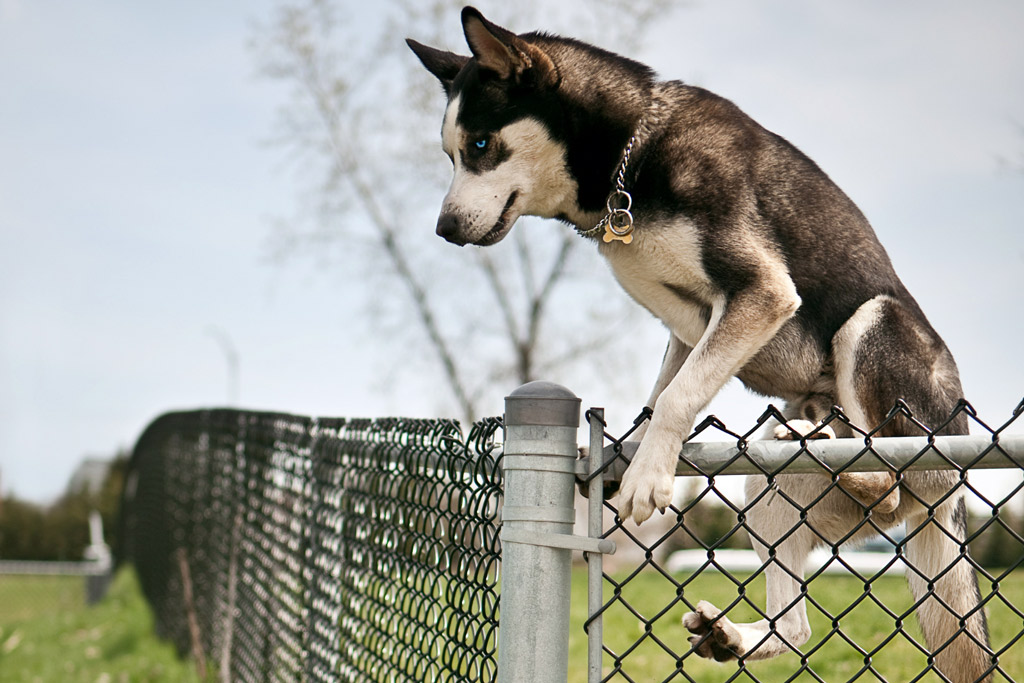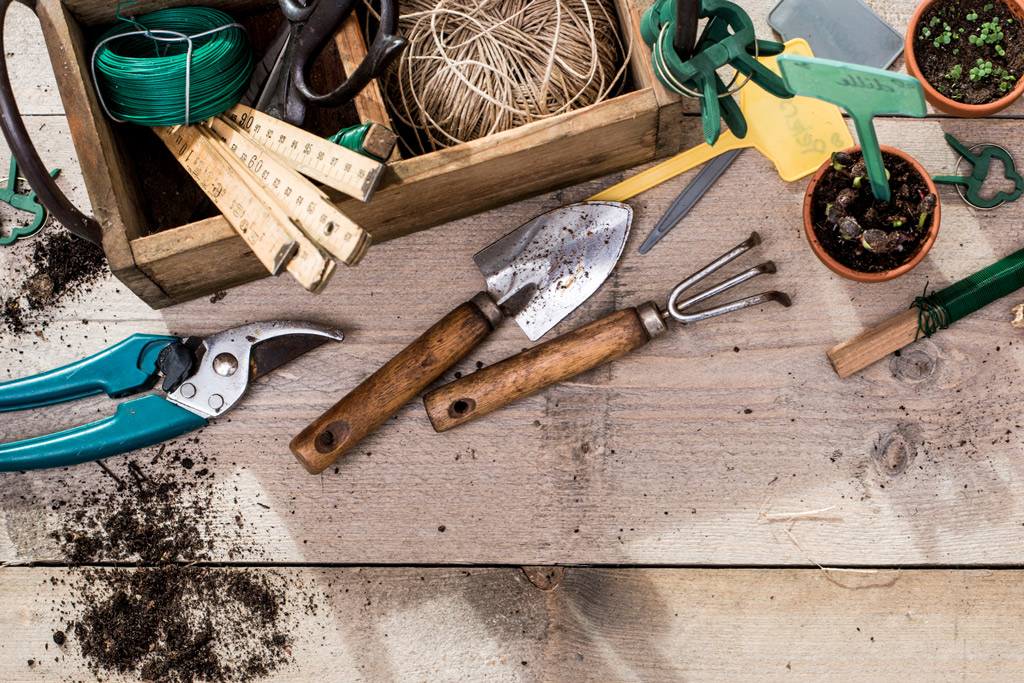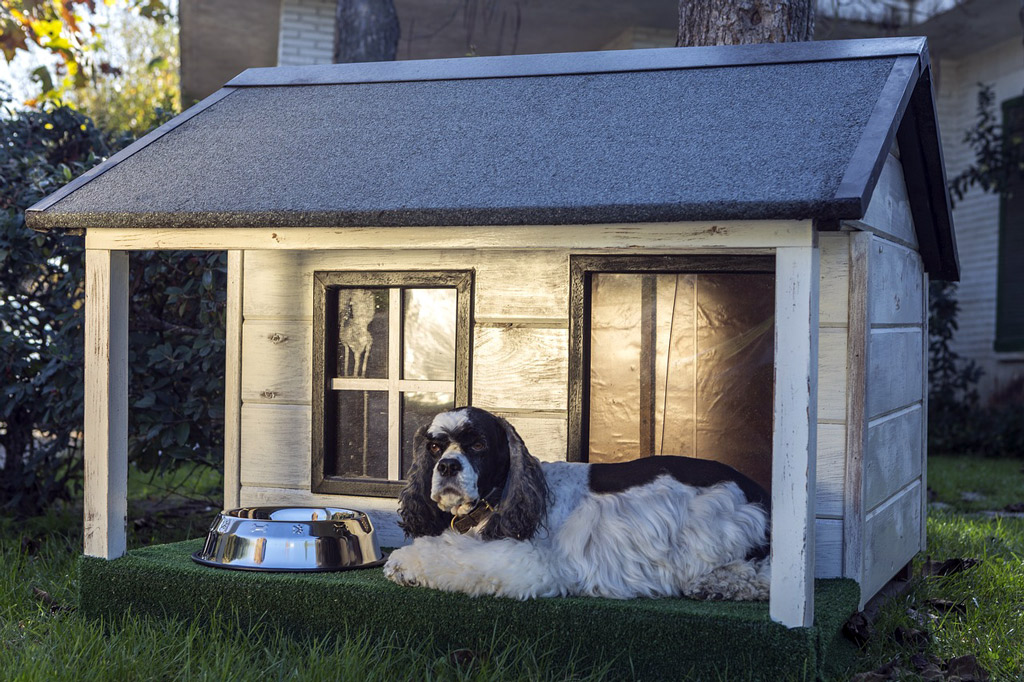
As a dog owner with a garden, you quickly learn not to underestimate the dog-garden combo. Your plants, flowers, general garden space and dogs are not automatically set up for a friendly relationship, which can leave you worried about how to maintain both sides!
A garden can be a great place for your dog to enjoy the outdoors, but it can also become your worst nightmare:
- What if doggy, Mr Athletic, manages to jump the backyard fence?
- Is there a huge hole in your recently planted, and cherished, bedding flowers?
- Or maybe the chosen potty spot is where your precious garden crops are?
- And those broken delicate garden pots?
Well, if any of these and other occurrences and concerns come to mind, you’re in the right place 😉
Continue reading to discover how to make your garden dog-friendly and keep harmony in your backyard!
How to Make Your Garden Dog-Friendly
The first thing you want to do is make your garden space and area safe for your dog. After that, we can move on to the tactics that help your dog not get into or create trouble!
There are many reasons why you will want to dog-proof your garden, and all are related to your dog’s safety.
#1 – Have a Dog-Proof Fence
Some dogs love to go for a stroll away from your garden boundaries. The worrying part is that dogs wanderlust tendencies can end up in a tragedy if your dog gets lost.
The best way to avoid this is to make the garden perimeter safe and secure:
- Measure your garden fence and decide if it’s dog safe.
- Most dogs will be okay with a 24-inch barrier.
- However, if your dog is particularly active, athletic, or a giant breed, install a 30–36 inches tall fence.
- When choosing a fence style, make sure that:
- There are no sharp edges such as decorative spikes that could injure your pooch.
- The fence is easy to spot. A dark metal or very fine one (like chicken wire) can become “invisible” depending on the surroundings and your dog can accidentally run right into it when playing.
- Check the fence for any holes or spaces where your dog might be able to squeeze through and patch them up if necessary.
- Terriers, in particular, are notorious diggers so do regular checks around the perimeter of your gardens and make any repairs straight away.
- Consider limiting your dog’s visibility. If your pooch is susceptible to outside temptations, consider installing solid-panelled privacy fencing.
- If your dog is likely to bark at or chase after other dogs and animals, preventing him from having a clear view of the outside helps to prevent these behaviours.
- Get a gate door with a lock. If you want to have a garden exit door, make sure that your dog is unable to open the door.

#2 – Create a Dog-Friendly Path and Lawn
Some doggies patrol the border of the garden as part of their woofy duty.
Most of my dogs have done so, apart from Tootsie, the pug we fostered; she was more interested in napping on my lap or tanning under the sun!
Creating a dog-friendly perimeter path can help your dog feel that he has a job to do in the garden. In fact, this border patrol duty is very helpful to keep squirrels, rabbits, or other vegetable raiders out of your garden!
Make sure it’s a pathway with a paw-friendly surface for your dog, like a stone-paved path. Avoid loose stones and gravel, which can hurt your dog’s paws or get stuck between their paw pads. Also, some dogs might pick up stones and accidentally swallow them.
Insider Tip: Paved paths can help keep your dog’s nails short naturally because he wears them down in contact with the pavement. This way, you will have to trim his nails less regularly 🙂
Finally, having a lawn gives you the chance and space to play games with your dog.

#3 – Avoid Plants that Are Poisonous for Dogs
Double-check your current plants to ensure they’re dog-friendly, or at least wouldn’t cause harm to your pooch.
The most common plants in dog poisonings include:
- Araceae family plants, which include: philodendron, pothos, peace lily, calla lily, dumb cane, arrowhead vine, mother-in-law’s tongue, sweetheart vine, devil’s ivy, umbrella plant, and elephant ear.
- English shamrock, rhubarb (leaves) and tropical star fruit.
- Kalanchoe.
- Corn plant or dragon tree.
- Spring flowers, including certain spring bulbs such as daffodils, hyacinth, and tulips.
- Poinsettias, holly, ivy, mistletoe, and lilies.
- Vegetables and herbs such as parsley and fennel.
Note: See the ASPCA’s list of toxic plants for dogs for a more detailed list.
The best practice is to avoid these at all costs i.e. better safe than sorry.
However, if your preference is to have some or any of these plants, make them unreachable and make everyone in your household aware of the consequences of that plant for your pooch.
As an amateur gardener myself, I recommend adding house plants that improve the air quality like a spider plant, aloe vera, and chrysanthemums. These plants are definitely beneficial for everyone, including your pooch 😉
Insider Tip: Even non-toxic plants can be dangerous for your pooch: thorny and spiky plants like cactus, yucca, or blackberries. I would either avoid growing them or keep them well out of your dog’s reach.

#4 – Keep Gardening Items Out of Reach
Keep the following items out of reach and also keep your dog away from the garden when using them:
- Pesticides.
- Fertilizers.
- Antifreeze.
- All tools.
- Trash and compost bins.
Note: Trash and compost bins can contain many dog toxins such as coffee grounds, mouldy foods, and bones.
Also, consider using natural pest control alternatives since chemicals are extremely toxic for pets and other wildlife.
Here are some natural alternatives you can try:
- Leave spider webs in place and let them do their job. Spiders eat mosquitos, which you want to keep away anyway because of all the diseases they can transmit.
- Crushed eggshells work to keep slugs and snails away from your plants.
- Encourage birds to visit your garden so they eat slugs, snails and insects.
- Instead of poison, use humane traps to catch mice and rats.
If you choose to use pesticides, it’s essential to keep all your pets away from the area for several days.

#5 – Minimize Other Possible Hazards
There are other possible hazards that you should try to minimize:
- Garbage bin system: If you keep your garbage bins in the garden, ensure the lid is always in place and secure. If possible, keep them behind closed doors (inside a shed) or make sure they are tall enough that your dog can’t reach in.
- Address damaged surfaces: For instance, cover exposed wires, remove protruding nails and repair sharp edges on your furniture or fencing.
- Stagnant water: If you have a birdbath fountain or a pond, keep an eye for dangerous blue-green algae.
- When landscaping: Choose dog-friendly materials. For example, mulch and cedar chips instead of sharp gravel for your flower beds.
- Keep vermin and snakes away: By raking up leaves and removing rubbish to keep them away since both provide a place for them to hide.
- Clear up pet poo: It’s important to remove any poo you find in your garden to avoid health problems for pets (worms, for example) and humans (especially if your kids play in the garden).

#6 – Provide a Dog Safe Zone Outdoors
If your pooch is going to spend time in your garden, providing shelter and water are part of the essentials.
You can keep your dog’s outdoor area simpler, in comparison to your dog’s safe zone indoors. A dog house will give your doggie the chance to shelter from heat and rain. Have a look at the range of dog houses for your garden on Amazon. Alternatively, some trees or a shade cloth that stretch over an area can provide some cover.
Also, to keep your pooch hydrated at all times, keep a water bowl in the garden so you can fill it with fresh water every time you let your pup out into the garden.

#7 – Go Through The Garden Safety Checklist
Go through this “How to make your garden dog-friendly checklist” to make sure that you haven’t missed anything:
| ❐ Check the fence for any holes or spaces where your dog can squeeze through and patch them up. |
| ❐ Clean all antifreeze from the floor and driveway. |
| ❐ Move all chemicals to high shelves or behind securely closed doors. |
| ❐ Keep all sharp objects and tools out of reach. |
| ❐ Make sure that plants in your garden are safe for dogs. |
| ❐ Keep your swimming pool fenced or covered. |
Now that feels safer for your dog to chill outside! Next, let’s shift our attention to your garden and protecting your precious plants & more.
Check it out in our blog post – How to Make Your Home Dog-Friendly and Safe.

How to Keep Your Garden Safe From Your Dog
Our furry friends are curious and can have a tendency to get in trouble if not taught otherwise.
Fact – some doggies are professional diggers and no plant is safe around them.
Growing up on my parents’ farm, our first two dogs really had it for our vegetable patch. Apart from going after moles, digging soil was also lots of fun for them!
Then we also had a dog who was a clear case of zoomies. He would gleefully run at full speed through everything… literally.
If you find yourself in a similar situation, continue reading to put in practise some simple but effective actions.
So, how do I protect my new plants from my dog?
#1 – Choose a Single Potty Spot
If anything, do this. Choosing your dog’s toilet spot is not only very helpful to establish a routine, but also helps avoid a messy garden and plants getting damaged.
Choose a potty spot that is easily accessible, relatively quiet and that won’t get too muddy; for example, a corner of your garden. This is a great way to protect your lawn and flowers.
After your dog uses his potty spot, make sure to clean up his poop. I keep a poop scooper and poop bags (Amazon links) in a corner of my garden, where I also have a bin that comes in very handy.
If you don’t choose a spot and train your dog to eliminate in that spot, your dog will run and relieve himself wherever he likes.
Also, for male dogs, you might want to add a marking post, like a fence post, where he can regularly stake out his territory.
Our Potty Training In 6 Steps blog post will help!

#2 – Create a Dedicated Digging Spot
Picking up from earlier, some dogs are diggers because it’s part of their nature and what they were bred for.
This is why it is important to understand your dog’s nature to then be able to channel it in a non-destructive way.
If your pooch is a digger, the best thing that you can do for both of you is to have a dedicated digging spot. For this situation, a sandbox comes in handy. You can get a compact plastic sandbox or bigger wooden sandbox (Amazon links).
Just make sure to cover it after your dog stops playing to avoid neighbourhood cats and other animals using it as a litter box. Also, make sure that kids don’t use it or leave their toys in it!
If you don’t provide a way for your dog to exercise his nature, he will continue to dig up your borders or make holes in your lawn.
So create a digging pit and encourage your pooch to dig in this spot. Praise your dog when he uses his sandbox. Also, you can give him a chew toy to play with and some healthy treats to boost his good behaviour. 🙂

#3 – Choose Dog Resistant Plants
When deciding what plants to go for, apart from staying away from poisonous and dangerous plants, choose resistant plants.
Here are some practical varieties of plants for your dog-friendly garden:
- Sturdy shrubs.
- Hardy perennials.
- Grasses.
- Trees.
When planting, do it densely, i.e., the closer together your flowers are planted, the less likely your dog is to run through them. Also, the taller they are, the smaller the chances of your pooch stepping on them.
Insider Tip: If you want to grow small, delicate plants, keep them safe in large pots, raised containers, or hanging baskets (refer to #5 below).

#4 – Avoid Exposed Soil
Soil and dirt can be a magnet for some dogs.
Does your pooch enjoy digging, playing and lying down in the cool soil?
The result is a damaged garden and dirty house, especially if when your pooch runs inside before you can clean him up!
The best solution is to remove the possibility of this by covering exposed soil with mulch, like bark or wood chips, and having paved paths.

#5 – Use Containers and Raised Beds
For securing those delicate flowers that I mentioned before, there are a few options:
- Plant in sturdy containers such as large pots.
- Use raised containers and beds.
- Decorate your wall or fence with hanging baskets.
- Put up low borders, barriers, or fence to protect them. They serve as a visible reminder to your pooch, rather than to physically keep your pooch out i.e. done properly, your doggy will recognize it’s off-limits.
Container gardening is a good option for growing delicate flowers that are still dog-safe. They also provide a solution for diggers and dogs who go a little wild in open spaces.
However, you should keep vegetable patches out of your dog’s reach since some plants can be harmful.
For example, a fallen overripe tomato is an accessible toxic treat for your dog. Keep your vegetable plants behind a sturdy fence that is at least four-feet high or in a greenhouse.

In Summary
How to make your garden dog-friendly doesn’t have to be difficult if you follow the steps above.
A dog-friendly garden design makes a difference because you minimize the chances of your pooch getting into trouble and you also keep him safe.
You don’t have to necessarily compromise the design of your backyard. However, applying these hacks makes it possible for both of you to be happy and enjoy the space.
Ready for the next step? Jump into the other 4 pillars of your dog’s welfare with our Dog Care Pillars blog post.
